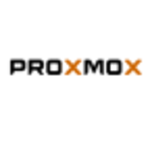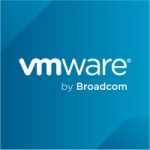What is our primary use case?
Our company uses it as a platform as a service. We have business units with developers who deploy their containerized applications in OpenShift. We have a team that supports the infrastructure of clusters all over the world. We run thousands of applications on it.
It's deployed on-prem and in the cloud.
How has it helped my organization?
One benefit is that it provides you with the flexibility and efficiency of cloud-native stacks while enabling you to meet regulatory constraints. They have a catalog of the ratings of the base images that we use to build our containers. We reference that to show our security team that an application we're building has passed the security with vulnerabilities that are acceptable. We won't deploy it if something is not unacceptable.
In terms of our organization, the business units are able to deploy changes to the code rapidly. They can test it on the test cluster and, once it's tested, they can deploy an image in seconds. It has saved us time. Our guys are continuing to move to the OpenShift platform from whatever they were on, whether it was a mainframe or a standalone machine. And they're doing that for the cost savings.
In addition, a perfect example of the solution's automated processes and their effect on development time is the source-to-image feature. The developer can use that tool to improve his code's quality and it saves him some time. He doesn't have to understand the specifics of building a container.
There is also an advantage due to the solution's CodeReady Workspaces. That definitely helps reduce project onboarding time. There are prebuilt packages that they use. We have a lot of Java and some .NET and Python and the CodeReady packages help. Conservatively, that feature has reduced onboarding time by 50 percent. It also helps reduce the time to market by about the same amount.
Overall, Red Hat is a handy tool to have, like an electric screwdriver instead of a manual one. We don't have to write things manually. We can use what they've already written to make us more productive.
What is most valuable?
The developers seem to like the source-to-image feature. That makes it easy for them to deploy an application from code into containers, so they don't have to think about things. They take it straight from their code into a containerized application. If you don't have OpenShift, you have to build the container and then deploy the container to, say, EKS or something like that. It's a little different.
In terms of the solution’s security throughout the stack and the software supply chain, it meets our needs. It's excellent as far as we're concerned. It goes right along with the Kubernetes role-based assets control. OpenShift's security features for running business-critical applications are excellent. A lot of our external-facing applications have been protected. We do use Apigee for a lot of it, but we also do security scans so we don't expose something to a known vulnerability.
What needs improvement?
The software-defined networking part of it caused us quite a bit of heartburn. We ran into a lot of problems with the difference between on-prem and cloud, where we had to make quite a number of modifications. That heartburn meant millions of dollars for us. That was a year ago and the product has matured since then. They've since resolved it, so it's not really an issue anymore.
The storage part of it was also problematic. There were quite a few things that really hampered us. But it's much better now.
For how long have I used the solution?
I've been using OpenShift for five years.
What do I think about the stability of the solution?
It's extremely stable. We haven't had any outages that were caused by the software. There have been issues due to human error on our side, such as not buying enough memory for the host.
What do I think about the scalability of the solution?
It's also extremely scalable. On our dev cluster, we auto-scale from 50 nodes up to 130 on a weekend, when there is a need. It also scales itself down to save money over the weekend. When people start hitting it on Monday, it scales back up, seamlessly.
In terms of users, we have about 20,000 developers, all over the world. It's used 24 hours a day. We have centralized development clusters that are being used all the time because we have deployments on every continent except Antarctica.
We're moving off mainframes and monolithic apps into the containerized world. Increasing our usage is a stated management decision in our organization. OpenShift has been growing in our company in the last couple of years.
How are customer service and support?
We use the tech support daily and they're pretty good. There are always going to be a few rough spots, but most of the time they're responsive.
You may get one support guy who doesn't understand the solution or the problem and they give a wrong solution, and we all know that it's the wrong solution. The problem is that we have people who have different first languages, so they don't always phrase the question well. I can see where a tech support guy might get a little confused because of the wording of an issue.
Red Hat, as a partner for helping to create the platform we need, has shared code, information, and ideas. They've been very helpful and open. We have a couple of technical account managers who meet with us once a month. One is in the UK and the other is in the US. They're very responsive when it comes to any problems we run into.
How would you rate customer service and support?
Which solution did I use previously and why did I switch?
Previously, all we used were standalone Unix machines. We didn't use a different container orchestration, like Mesos. We never considered building our own. We took a look at OpenShift a long time ago and it was really the best at the time.
How was the initial setup?
Version 3 is very complex but it's 1,000 times better than five years ago, and it's even much better than it was a year ago. The deployment was a pain point for our company, but it's irrelevant for someone buying it now. They have fixed a lot of stuff.
We have huge deployments, hundreds of nodes in a cluster. The deployment time is relative to the size of the cluster, but the deployment time has gone from a week to a day for a 100-node cluster. Red Hat has improved the process considerably.
What was our ROI?
It provides us with good value.
Which other solutions did I evaluate?
There weren't a whole lot of options. There was Mesos or home-grown or Kubernetes using Rancher. There wasn't anything that really compared to OpenShift at the time. OpenShift was a complete package. There were a lot of things you had to do manually with the other products. The Kubernetes world has changed a lot since then.
The fact that Red Hat was open source was a factor and the security was what we really liked about it. They use CRI-O, which is a secure runtime container, as opposed to using Docker, which is super-insecure running as root. Red Hat is definitely the leader in the container security world.
What other advice do I have?
You have to understand what you're getting into and you have to be committed to upgrading it. There are some people in the world who say they'll never want to upgrade it again. With Kubernetes, if you're going to get into OpenShift, you have to "sign the bottom line," so to speak, that says, "I'm going to update it," because the Kubernetes world moves at a fast pace.
In terms of container orchestration, we are totally OpenShift, but we use other Red Hat products like Linux and Tower. We do have standalone Linux machines that we manage, but we'll be migrating some of the applications from those standalone machines into the OpenShift container world. That's where the cost savings are.
Disclosure: PeerSpot contacted the reviewer to collect the review and to validate authenticity. The reviewer was referred by the vendor, but the review is not subject to editing or approval by the vendor.




















